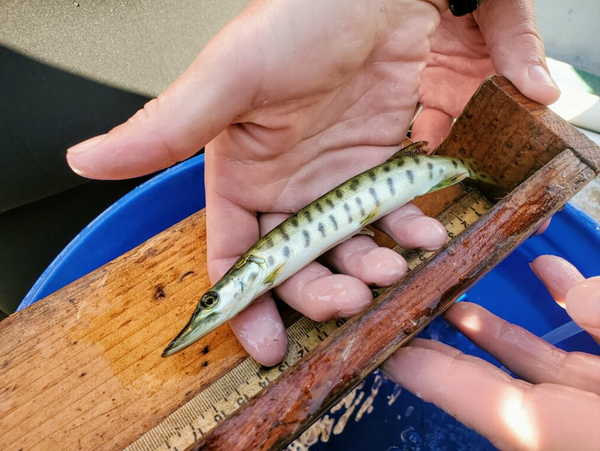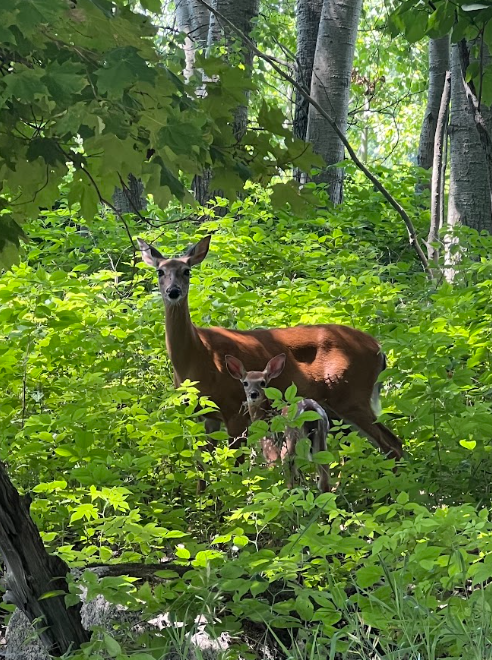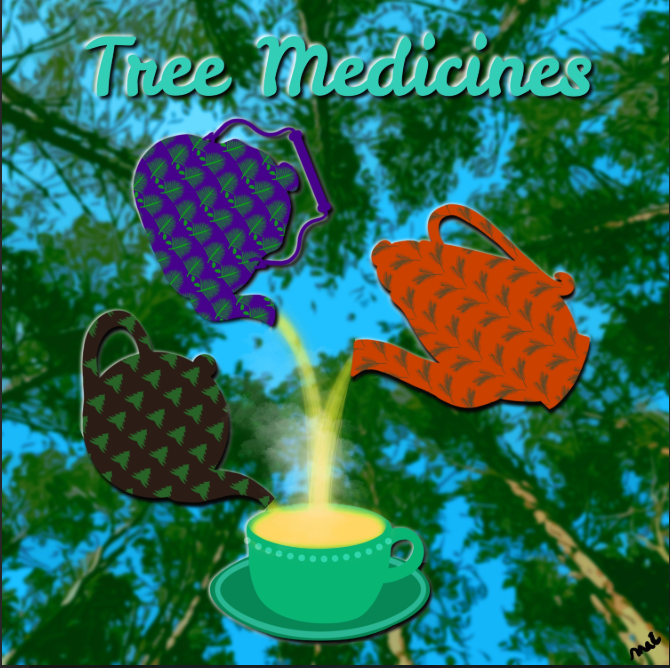Snowy Owls are back again!
by: Sherri Leigh Smith
As noted in a previous article, this apex northern predator seems to be occurring with greater regularity and in greater numbers in our region. While Snowy Owls have been present annually in hotspots such as Wolfe and Amherst Islands, and in northwestern Jefferson County N.Y., they have been scarce in other parts of our region. Since the turn of the 21st century, and particularly since 2010, there appears to be a change in the pattern. An active observer in the North County reasonably expects to see at least several Snowies each winter.

In the late 19th and most of the 20th century, this species was famous for significant incursions one year, often followed by a smaller "echo" flight the following year. As a result, this Arctic species was often very scarce in between such invasions, even in our northern region. For the moment, this is no longer the case, and each year for most of the last decade and a half, we have witnessed fair to sometimes spectacular numbers of this magnificent northern breeding owl locally. In the Thousand Islands, most sightings occur between November and March.
Why this is happening is not clear. Ornithologists have a basic understanding of what drives predator/prey cycles in Arctic ecosystems.
The conventional wisdom is that several species of small rodents, such as lemmings, undergo population explosions followed by crashes. Species that prey on these rodents increase following their prey populations going up. Then, once the prey base collapses, the predators must emigrate if they can or else starve to death. Thus, these wide population swings are reflected by the previously observed pattern of Snowy Owl "invasions”. While aspects of this cycle may still hold, something else is going on. Something is sending birds south more frequently, in at least parts of the species range.
Specific long-term patterns are still apparent despite the greater frequency of owls arriving in our area. The vast majority of individuals present are immatures hatched on the tundra during the previous summer. So far, during the winter of 2021-2022, virtually all owls seen in Northern and Central New York are immature females. This is the age/ sex group that usually goes the farthest south. Immature males as a group and adult females usually remain predominantly north of the immature females. Most adult males remain the farthest north, with many hunting seabirds along with open leads in Arctic ice.

The immature females' large, darkly barred plumage is in sharp contrast to the few nearly pure white adult males that occasionally appear in our region. In addition, these immature birds are usually fairly tame since they often seem not to know what humans are. Coming from the tundra where our species is still relatively scarce, compared to much of the rest of the planet's surface, this is understandable. Observers and photographers approaching these conspicuous creatures should still seek to minimize their impacts. It's not unusual for young raptors to be food stressed, so flushing them for a flight photo is a very bad idea.
Starvation is a primary source of mortality for young Snowy Owls. Several dead and weakened birds have been picked up and taken to wildlife rehabilitation sites or agencies during the current flight. Most of these birds were/had been suffering from insufficient food. Since capturing live prey is far more difficult than eating vegetarian foods, many young Snowies and other raptors don't make it through their first year.
That is why it's so important that we observers don't add any additional stress to potentially vulnerable individuals.
Given the technology available even in cell phone cameras, one can usually get good images to take home using automobiles as blinds. Rarely does one disturb these birds if you remain in a car. Walking is more problematic as most wildlife has a long evolutionary history with the bipedal human form. Since this history is less than ideal for most large birds and mammals, NOT approaching any Snowy Owl on foot is a good idea. While one can never be certain what impact observer presence will have, caution is the motto. Give wildlife their space, and everyone is happy.

In recent years, snowy Owls and other Arctic species are receiving greater study attention. Given that climate change is warming high latitudes faster than other parts of our planet, the potential for ecological disruption is obvious. In our region, all species that use open/grassland habitats at any season are vulnerable to habitat loss. This is being caused by large-scale renewable energy development, intensive agriculture, and other impacting factors. Wintering Snowy Owls and other grassland raptors feed primarily on meadow voles. Large-scale solar and agriculture clearly alter the vole habitat and probably have highly adverse population impacts. Therefore, snowy Owl should be considered one of the suite of grassland birds potentially impacted by large-scale land-use changes occurring in our region.
Recent research also shows that some of our wintering Snowies do what their counterparts who stay in the Arctic do for food. In this case, they fly out to the islands and ice edges of Lake Ontario and probably the River. Since duck and gull populations usually are present and using these water bodies in numbers each winter, this may be a more predictable food source than fluctuating vole populations. Technology developed in the last decade that tracks the birds via cell tower tags makes our understanding of local movements possible.

The arrival of these beautiful creatures from their northern breeding grounds is always a treat for local observers. Conspicuous to a fault, mainly when snow cover is absent, they attract the attention of experienced naturalists and the general public alike. While we really don't know why they are appearing more frequently and should be concerned about the human disruption of their natural cycles, we can enjoy their visits. We also can try to make sure that our region remains a hospitable place for our wintering Snowy Owls to inhabit for a few months each year.
By Sherri Leigh Smith, goshawk@gisco.net
Photographs by Julie Covey, Nature in NY (https:www.facebook.com/NatureinNNY/)
Sherri Leigh Smith is the Senior Ornithologist in northern NY. She is passionate about birds and their conservation. Sherri Leigh has written numerous articles for TI Life, and you can see several of them here.
Editor’s Note: This editor is both pleased and appreciative of Sherri Leigh Smith for taking the time to help us understand more about birds and nature in the islands. Sherri Leigh and nature photographer Julie Covey provided wonderful contributions for fall 2020, winter, spring and summer 2021 and now they start the year off right with a fascinating article. I keep saying that already I am getting better at looking at the sky and those flying by and understanding the who, what, how and why!






Please click here if you are unable to post your comment.